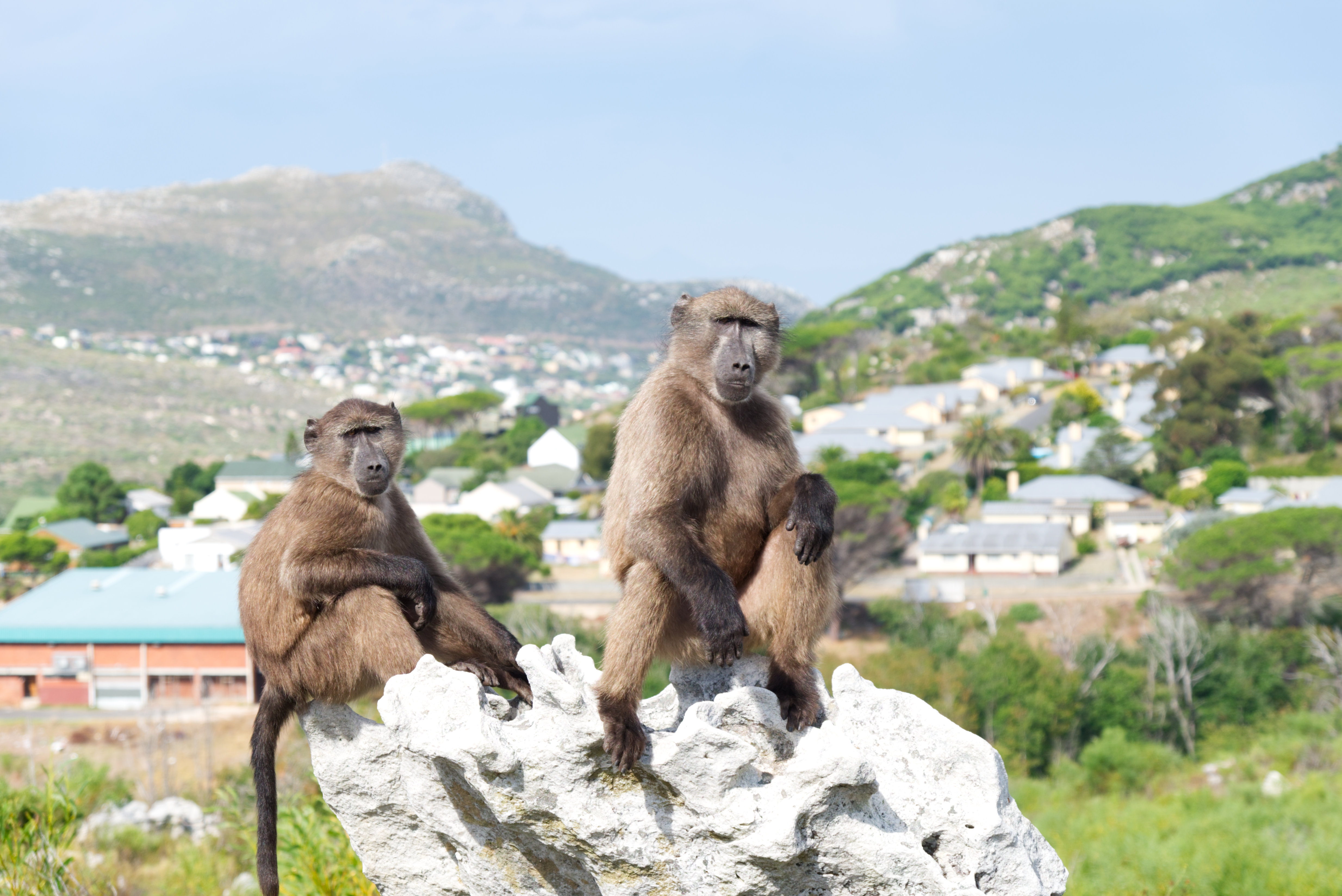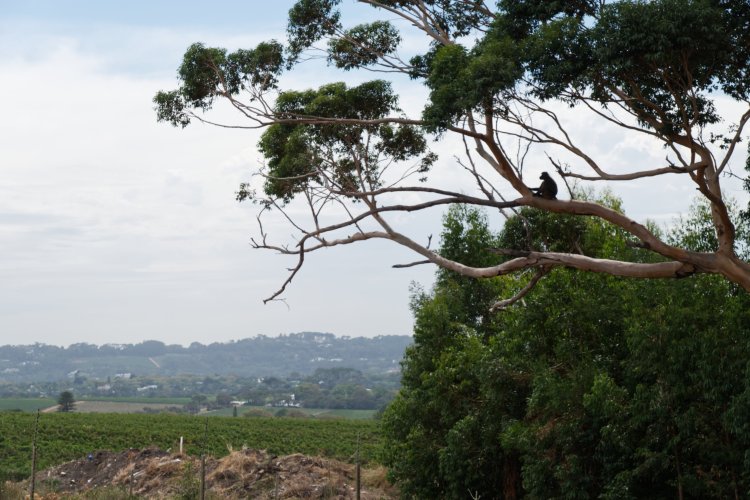
Unruly Natures is a research project that aims to better understand how people experience and interact with baboons in an urban setting.
This is a relevant research topic in many parts of the world, as human settlements and activities continue to expand. While the environmental impact is often negative, some wildlife find ways to survive or even thrive in cities’ predator-scarce, food-rich and artificially heated landscapes. Examples include otters in Singapore, badgers across UK towns, humpback whales in New York harbour, and leopards in Mumbai. This can lead to both positive and negative interactions between people and wildlife. Public opinion and understanding are often divided regarding the best way to respond to the presence of wildlife in cities. The urban setting, therefore, poses new challenges to landscape management, wildlife conservation, and environmental stewardship.
The Unruly Natures project focuses on the perspective of residents in baboon-visited neighbourhoods. Cape Town presents a unique set of examples of this, with a variety of challenges depending on differences in geography, baboon troop dynamics, and socioeconomic conditions, as well as decades of debate around the topic. Importantly, the project does not attempt to resolve all issues or prescribe solutions, but primarily to provide a better understanding of residents’ own lived experiences of and attitudes towards baboons. We hope to involve interested stakeholders in the research process and share findings in a way that can contribute to a mutual understanding of different viewpoints on a complex issue, and point to areas of potential collaboration.

What we study
Unruly Natures is guided by three research questions:
- How do personal experiences shape residents’ attitudes towards baboons?
- What do residents think of different efforts to manage baboons in their area?
- Can a better understanding of, and empathy for, different viewpoints help identify areas of collaboration?
It is also worth mentioning what the project does NOT try to do. We do not study baboons themselves. We do not seek to achieve any specific policy goal, and we are not receiving funding from anyone apart from what is declared at the bottom of this webpage. We do not try to undermine or replace pre-existing efforts to understand, protect, manage or lobby for baboons and baboon-related issues.
How we do it
The type of research we do is designed to combine academic expertise with the local knowledge held by people who regularly experience urban wildlife. First of all, we have invited residents to influence the direction of the project by joining or nominating members to our Advisory Board, which meets regularly for the duration of the project. Second, we use research methods that collects qualitative and quantitative data in the form personal stories about participants’ own experiences of baboons, and how these have shaped their views about the human-baboon relations. In 2023, we carried out a representative, door-to-door survey across all baboon-affected neighbourhoods on the Peninsula, using the SenseMaker tool (details and preliminary findings in the first video below). Third, drawing on residents’ own stories and the emerging research insights, we partnered with Empatheatre to create the play Unruly. This toured all our study areas in 2024, each performance followed by a facilitated discussion with audiences. We recorded both these collective reflections, and the individual, anonymous survey responses that people could fill out after the show (more details and clips from the play in the second video below).
Rather than try to create consensus, we hope that this project can foster a mutual understanding of and empathy for different views and safe space to explore collaborations between residents, communities and other stakeholders.
The project is funded for 2022-2025 by Formas, a Swedish research council for sustainable development (grants: 2021-00780 and 2023-02675) through the Stockholm Resilience Centre at Stockholm University.
See potential for collaboration?
Photo credit: J.Enqvist